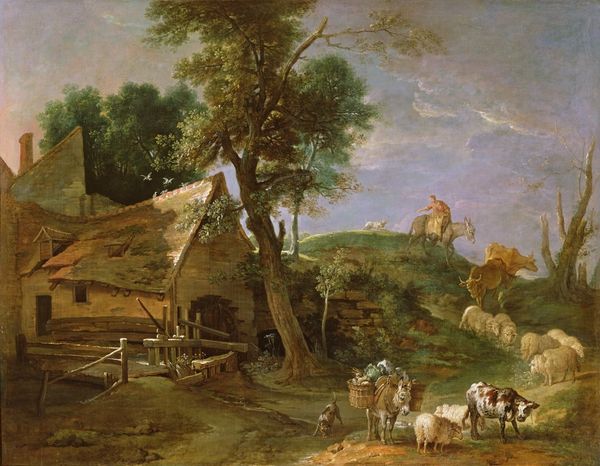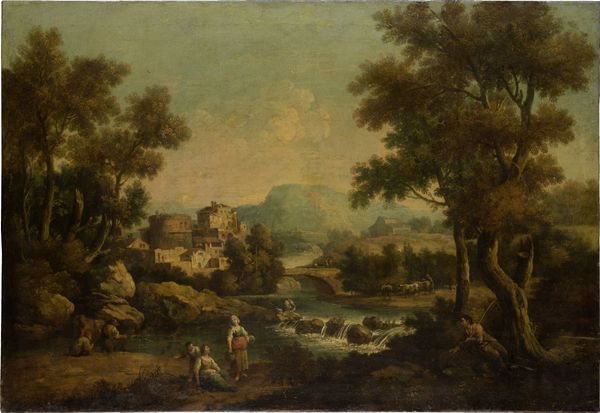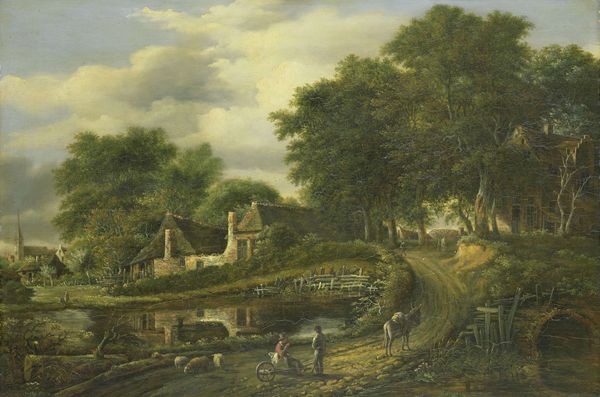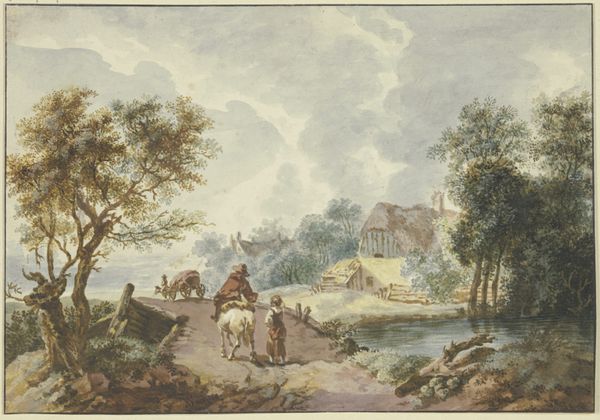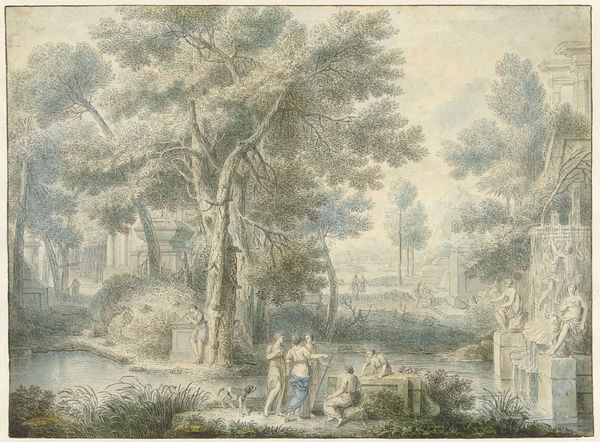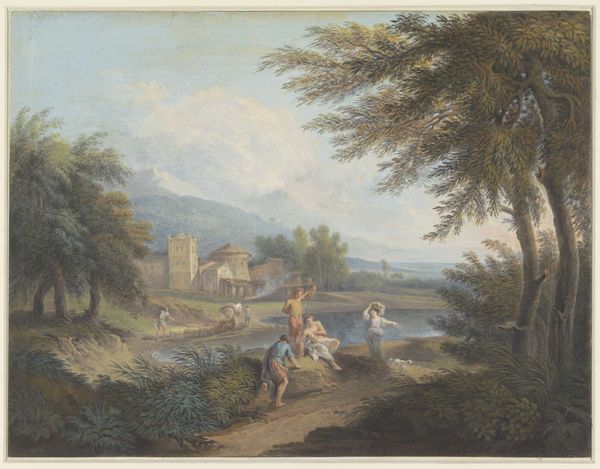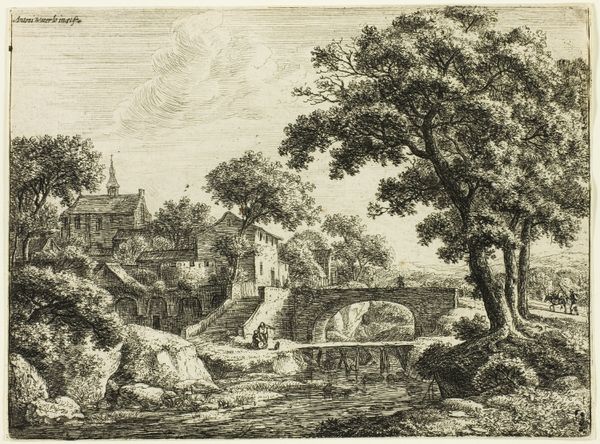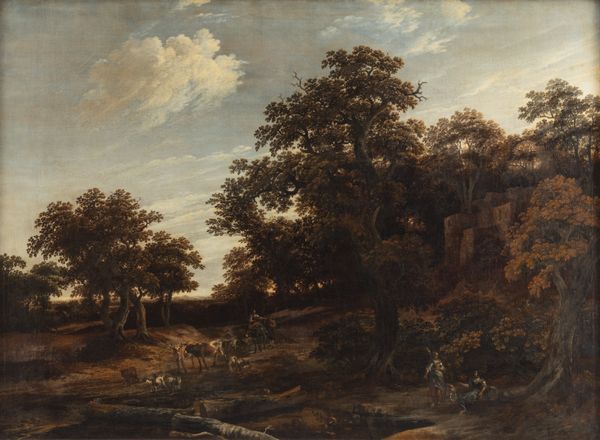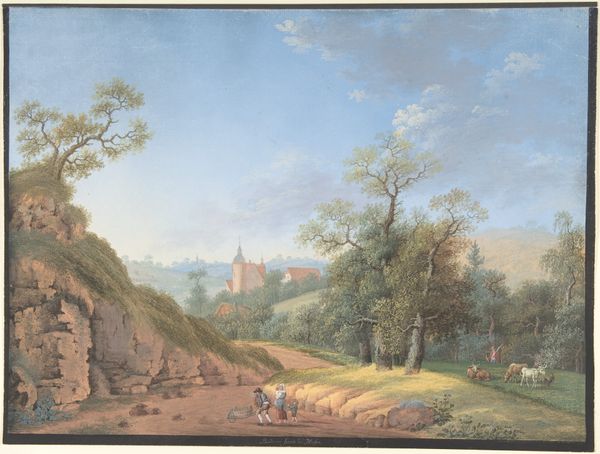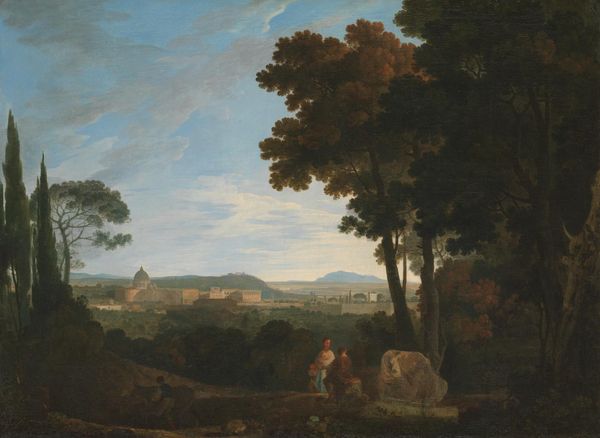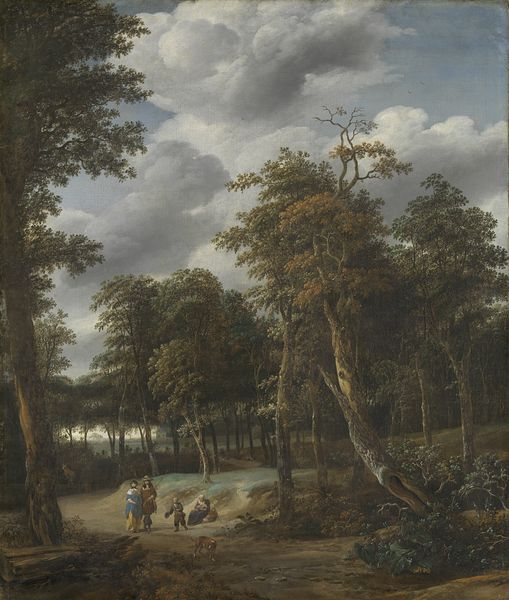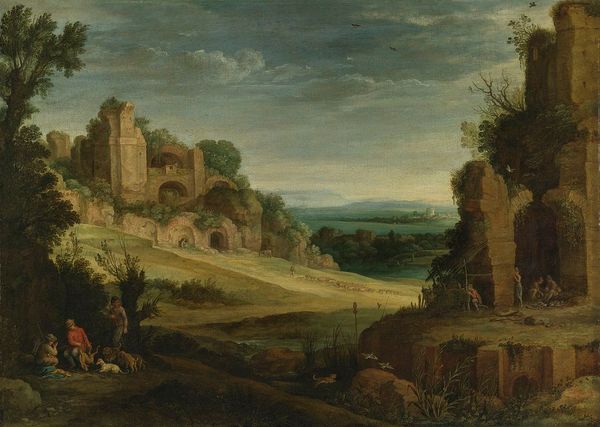
oil-paint, wood
#
baroque
#
dutch-golden-age
#
oil-paint
#
landscape
#
figuration
#
oil painting
#
wood
#
genre-painting
#
realism
Dimensions: 10.5 cm (height) x 18 cm (width) (Netto)
Curator: Here we have Esaias van de Velde’s "Landscape with a Ruin," dating back to 1627. Van de Velde, a master of the Dutch Golden Age, painted this serene scene in oil on wood, now showcased here at the SMK. Editor: The light in this is just unreal! It’s hitting that ruin, making it glow like an ancient ember. Instantly makes you wonder about the story behind those crumbled walls. Was it a castle? A temple? It's so evocative. Curator: Precisely! Note the composition. Van de Velde expertly employs aerial perspective, gradually lightening the tones to suggest depth, drawing our eye from the detailed foreground to the ethereal distance. Semiotically, the ruin symbolizes the passage of time and the ephemeral nature of human creation. Editor: True, there's something wistful about it. I dig how the everyday figures – the shepherd with his flock, the riders by the pond – seem oblivious to the decay. It's like, life just keeps rollin' on, even amidst the ruins of grand old dreams. Almost like a movie set backdrop for a daily pastoral drama. Curator: Indeed. Furthermore, observe the materiality: the coarse texture of the aged wood panel provides an underlying structure for the artist’s delicate brushwork, creating a textural counterpoint between the permanence of the support and the implied transience of the scene itself. The figures' presence in genre scenes became fashionable, and added depth to the painting. Editor: I'm picking up what you’re throwin' down. I love how all of it plays together, from the painterly strokes, like an impression, to the little dog tagging along behind the shepherd. This painting gets you thinking about time, change, about permanence versus...everything falls apart eventually, right? And isn't art one of the ways we sort of poke back at that truth? Curator: Precisely. The artist creates tension using multiple tools, making viewers think not only about themselves, but about life and death itself. The semiotic relations help add to the landscape, while adding unique features in terms of characters as well. Editor: Well put. You have truly changed how I will approach viewing art for the better. Curator: And you, for showing an additional personal aspect I had yet to discover!
Comments
No comments
Be the first to comment and join the conversation on the ultimate creative platform.
